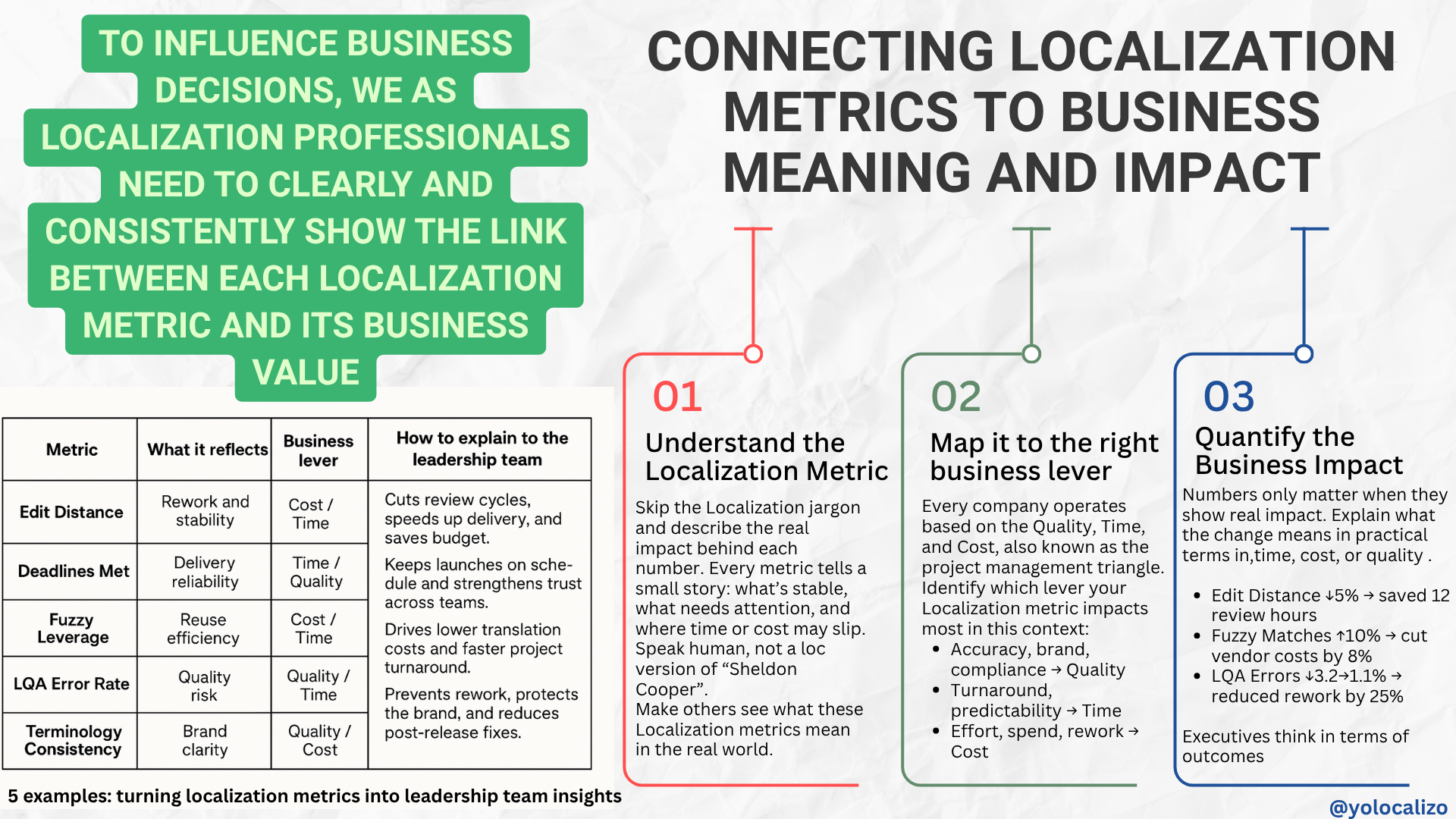The hidden price tag of Global Content: why per-word rates don’t tell the full story
I’m not really sure how LinkedIn’s algorithm works these days. I keep getting notifications or posts from three weeks ago, and now my feed also shows me “new” articles that are actually quite old.
That’s how I ended up reading a piece by Blinken from 2023. The title was too tempting to skip: “When Two Words Cost $100,000 to Translate.”
The article explains how poor translation quality creates hidden costs everywhere, from additional meetings with unhappy local teams to support staff having to fix unclear instructions. It can even cause real damage when errors appear in safety notes or critical user interfaces as the blog post explains. Every fix takes time from engineers, slows momentum, and leads to lost revenue, wasted effort, and reputational harm.
Building on that idea, I want to expand on the various factors we should consider to understand the total cost of creating global content.
Throughout my career, I have often seen procurement teams celebrate after renewing a language service provider contract with lower per-word rates, and then a few weeks later, the engineering teams are still dealing with string bugs or redoing translations the Localization team because the tone was off.
When we talk about localization, Most conversations stop at per-word rates. But that number is only the visible tip of the iceberg.
The real cost lies in engineering hours, QA loops, release delays, and customer support work that result from chasing what appears to be “cheap.”
In other words, the Total Cost of Ownership (TCO) of global content often differs significantly from what is shown on the invoice.
Total Cost of Ownership (TCO) is a financial approach that calculates the complete cost of a product or service over time, not just its purchase price. It helps organizations see the impact of operational, maintenance, and quality costs that affect long-term efficiency.
What “cheap” really costs
Let’s be honest, who has not celebrated getting a lower translation rate? It looks great in a quarterly report and feels like a win.
But per-word rates are only one part of the equation.
Click HERE to download the graphic
It is like buying a car that looks affordable but spends half its time in the repair shop. The low price disappears once you add the cost of time, repairs, and frustration.
The same logic applies to global content. Here is where the hidden costs usually appear:
Engineering: more time spent debugging internationalization issues or cleaning up broken strings.
LQA: extra test cycles to validate text expansion, right-to-left layouts, or untranslated segments.
Customer support: spikes in tickets after confusing UI copy or inconsistent tone in help articles.
Rework and local reviews: extra effort and meetings when translations lack context or fail to match local expectations, leading to multiple revision cycles and delays
A lower per-word rate might save a few cents per line, but if it delays a release by even one day, your total cost can increase fast.
The focus is on seeing the full picture. Once content enters your product, every adjustment or review affects time, quality, and cost.
Understanding Total Cost of Ownership
The concept of Total Cost of Ownership comes from manufacturing and software, but it applies perfectly to localization. It asks: What does it really take to produce, deliver, and maintain this thing over time?
When we apply that to global content, it means factoring in:
Content creation and context: Do writers include localization notes or screenshots to avoid confusion?
Engineering integration: Is the pipeline automated, or are developers manually exporting files?
Localization QA: Who catches layout or truncation issues before release?
Support and feedback loops: How many tickets or NPS comments are linked to unclear or mistranslated content?
Brand and consistency management: How much effort goes into fixing tone or terminology inconsistencies later?
When teams measure all of this together, the per-word rate becomes just one small input, not the main decision driver.
Why this matters for leadership
When procurement and leadership focus solely on lowering per-word rates, localization often ends up being viewed as a cost center rather than a strategic partner.
Localization teams can change that view by introducing the concept of TCO and demonstrating how their work enhances efficiency, quality, and customer satisfaction.
The organizational blind spot
Here is the irony. The teams most affected by localization quality, such as engineering, QA, and support, are often the least involved in vendor selection. Decisions are made in procurement or marketing, disconnected from where the actual impact happens.
Breaking that silo means bringing those voices into the cost conversation:
Ask engineers how many hours they spend fixing string bugs.
Ask QA how many test cycles go to localization issues.
Ask support which markets report the most confusion.
Those are your real TCO indicators, and they are measurable.
Final thoughts
Look beyond the rate card. If you have been in localization long enough, you have probably seen this pattern.
A small increase in vendor cost leads to faster delivery, fewer bugs, and smoother releases.
That is TCO at work, and it is the difference between cheap and efficient.
Next time someone compares vendors only by per-word rate, ask:
“Which one helps us deliver quality content faster, with fewer surprises downstream?”
Because at the end of the day, the best localization partner is not the cheapest one. It is the one that lets your product team sleep well on release night.
@yolocalizo












Most localization discussions stop at per-word rates. However, what appears inexpensive on paper can often turn into costly delays, rework, and frustrated teams.
Total Cost of Ownership (TCO) provides a more comprehensive view, one that encompasses engineering fixes, QA cycles, support tickets, and brand impact.
When procurement and leadership focus only on price, localization becomes a cost center. When they consider TCO, it becomes a key driver of quality and efficiency. And this post explains how to approach that